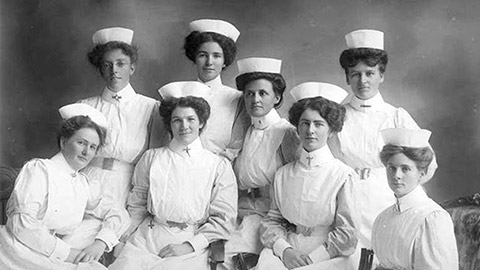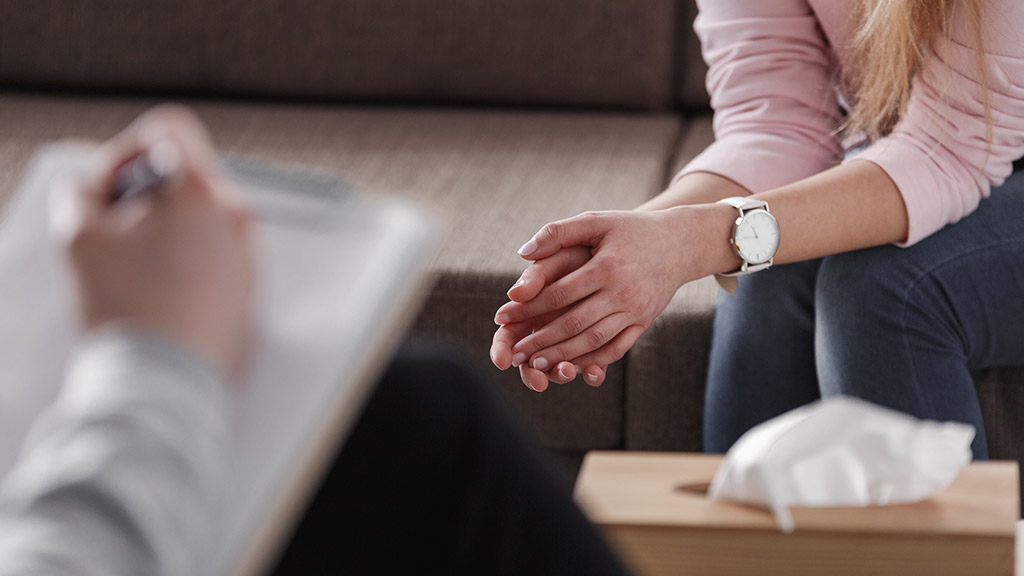Let's journey through the development of healthcare in New Zealand.
We will explore the aims and challenges faced, as well as initiatives implemented over the years.

Primary health care is professional health care provided in the community.
Primary health care in the 19th century was a combination of traditional or folk and patent medicines with only occasional visits to a doctor, as doctors were expensive. Healthcare was divided into orthodox medical practitioners and alternative practitioners, mostly homeopaths. Medical education was not standardised, and alternative practitioners could claim respectable qualifications.
Māori health care at this time was a mixture of natural medicines and spiritual healing. Still, they were increasingly interested in using European medicines. The 'cure all' at this time was cod liver oil which was given for all sorts of ailments.
In the mid-19th century, vaccination against smallpox was provided. Still, many died of infectious diseases such as tuberculosis, typhoid, poliomyelitis and diphtheria. The causes of these diseases were not well understood. Families tended to diagnose and treat themselves, and women recognised in the community provided informal healthcare and childbirth support. Midwifery was also undertaken by medical practitioners.
Key historical developments
The following table highlights a few major milestones in the history of primary healthcare.
| 1875 | The Otago Medical School was established in creating a local standardisation of practices among medical practitioners. |
| 1886 |
The New Zealand Medical Association was established. The start of the District Nurse service provided free treatment for people unable to afford medical services in urban areas. |
| Late 19th | Māori women in the community continued to provide health information and care. |
| Training courses for nurses were available. | |
| Doctors started to dominate primary health care, hospitals become popular and medical advances, including the introduction of x-rays and anaesthesia, increased the status of medicine. | |
| 1907 | The Society for the Promotion of the Health of Women and Children (now Plunket) was established. |
| 1909 | Free district nurses in rural areas. |
| 1935 | State funded access to healthcare. |
(Belgrave, 2022)
Please refer to the two following links for further reading on NZ's history of primary healthcare:
Public health units deliver both health protection and health promotion activities, such as monitoring food and safety and providing information to the public about nutrition and physical activity. (www.health.govt.nz)
Many changes and improvements have been made to the New Zealand health system over the past 20 years. The health system reform in 2022 aims to provide a service that will improve the health and wellbeing of all New Zealanders.
Changes will be made over time for example;
- There will be a range of care and support available for people in their local communities, with more care provided outside of hospitals.
- Services such as general practice, well-child teams, pharmacists, dietitians, physiotherapists and hauora Māori providers will work more closely together to respond to and meet the needs of people in their local communities.
- More options for whānau to access kaupapa Māori and other appropriate services.
- Those with greater or higher health needs will be able to get the services they require to help them get well sooner.
- Access to consistent and high-quality emergency and specialist healthcare, available to everyone in Aotearoa New Zealand, no matter where they live.
- More virtual and digital services will be available to support the system, such as phone and video consultation, offering people a wider range of personalised support in their homes and local communities.
- People will be encouraged to get involved in designing health and wellbeing services that work for them, and have real influence over the services they receive, through participation in local planning and the opportunity to engage in national consumer forums. (futureofhealth.govt.nz)
The transformed health system will be:
- People-centred
- Equitable
- Accessible
- Cohesive
Watch: Future of Health - the Five System Shifts (2:59 Minutes)
Watch the following video on the future of health of New Zealand.
The Ministry of Health's definition of equity is:
In Aotearoa New Zealand, people have differences in health that are not only avoidable but unfair and unjust.
Equity recognises different people with different levels of advantage require different approaches and resources to get equitable health outcomes.
The new health system will have a whole-of-country view for planning and delivering services, thus reducing the system's cost. Two new health organisations have been created to support the Ministry of Health. They are Health New Zealand and The Māori Health Authority Te Aka Whai Ora.
Health New Zealand will coordinate health services across New Zealand, from local to national healthcare.
The Māori Health Authority will work in partnership with Health New Zealand to ensure health services work better for Māori.
The interim health plan has six priority actions identified to deliver the proposed changes:
- Place whānau at the heart of the system to improve equity and outcomes
- Embed Te Tiriti o Waitangi across the health sector
- Develop an inclusive health workforce
- Keep people well in their communities
- Develop greater use of digital services to provide more care in homes and communities
- Establish Te Whatu Ora and Te Aka Whai Ora to support a financially sustainable system
Learning checkpoint
The new legislation, which took effect on 1 July 2022, establishes Health New Zealand and the Māori Health Authority as enduring institutions that will replace the DHB system.
Additionally, it establishes the Public Health Agency as part of the Ministry of Health, strengthening its role in overseeing health matters. The legislation marks a significant milestone by formally acknowledging iwi-Māori Partnership Boards for the first time.
Māori Health Strategy
He Korowai Oranga is a Māori Health Strategy that was launched in 2002 and is part of the continuous improvement of the health strategy.
It is a framework for improving Māori health and reducing health disparities between Māori and non-Māori in New Zealand. The framework is based on Māori cultural values and principles, including the holistic view of health, the importance of whānau (family), and the concept of aumangea (partnership).
It is an all-inclusive approach that considers physical, mental, emotional, and spiritual well-being and emphasizes the importance of cultural identity, community engagement, and the recognition of Māori as Treaty partners. It is used to guide policy, practice, and service delivery to improve the health outcomes of all New Zealanders. You can read more about the strategy in the following diagram.
Pae Ora - Healthy futures for Māori
- Wai Ora - Healthy environments
- Whānau Ora - Healthy families
- Mauri Ora - Healthy individuals
- Māori aspirations and contributions
- Crown aspirations and contributions
- Rangatiratanga
- Build on the gains
- Equity
- Whānau, hapū, iwi, community development
- Māori participation
- Effective service delivery
- Working across sectors
Pae Ora | healthy futures, is the top and ultimate goal that steers the healthy futures for the Māori plan.
It provides a platform for Māori to live with good health and wellbeing in an environment that supports a good quality of life. Pae ora encourages everyone in the health and disability sector to work collaboratively, to think beyond narrow definitions of health, and to provide high-quality and effective services.
Pae ora is a holistic concept and includes three interconnected elements:
- Mauri ora | healthy individuals
- Whānau ora | healthy families
- Wai ora | healthy environments
All three elements of pae ora are interconnected and mutually reinforcing and further strengthen the strategic direction for Māori health for the future.
Activity - Turn the card
Learning checkpoint

The concept of mauri ora captures the importance of the individual.
It sets the direction for the health system to ensure that Māori, as consumers of health services, have pathways to care that meet their immediate needs and future needs across all stages of life. Achieving mauri ora will mean that individuals have good health and that the health system works to ensure that how it delivers services across the continuum, from prevention to treatment, is appropriate for Māori at all ages. (The Guide to He Korowai Oranga: Māori Health Strategy 2014).
In essence, whole-person health is about living a balanced and fulfilling life that promotes wellbeing across all aspects of one's being.
It's not just about physical health but also mental, emotional, and spiritual health, which are all interconnected and equally important in achieving overall wellness.
So what's 'normal' for someone accessing services?
To respond to or report a change in someone's health or functional status, you need to be able to establish how the person was before the change happened.
Each individual has a unique 'normal' state, which is determined by various factors, such as their:
- Overall health, including any existing illnesses, injuries, or disabilities
- Personal preferences, including cultural considerations
- Assistance and support they currently receive
- Typical abilities and capabilities
- Typical emotional state and well-being
- Usual manner of presenting themselves

Whānau ora is a fundamental philosophy for creating strong, healthy and empowered whānau.
A strong healthy and empowered whānau can make the most significant difference to Māori health and wellbeing.
Whānau empowerment will be shaped by:
- Access to quality information and advice
- Necessary resources
- Healthy living
- A sense of agency and self-determination
- A conviction that the future can be created, not simply endured
(Whakamanu: Māori Health Action Plan, 2023)
In 2013 the government set up a Whānau ora programme jointly run by the Ministry of Health, Te Puni Kōkiri (Ministry of Māori development), and the Ministry of Social Development.
Now, Whānau Ora is an organisation that works to improve the wellbeing of tangata and whānau using a holistic whānau centred approach. Their philosophy is to build on the capabilities and strengths of whānau and find the service that best suits their needs.
Whānau Ora is based on the understanding that health and wellbeing are not just the absence of illness but also encompass physical, mental, emotional, social, and spiritual aspects of a person's life. The approach emphasises a collaborative and culturally appropriate approach to health and wellness, where individuals and their families are empowered to take responsibility for their health and work in partnership with health providers to develop solutions tailored to their specific needs.
Whānau Ora work with community-based partners with a 'by Māori, for Māori' approach, who use local knowledge to provide a wraparound service to support tangata and their whānau to achieve whānau outcomes. 'Outcomes mean whānau will enjoy good health, experience economic wellbeing, be knowledgeable and well informed, be culturally secure, resilient, self-managing and able to participate fully in te ao Māori and wider society'.
The Whānau Ora approach has been implemented in New Zealand through the Whānau Ora Commissioning Agency, which works with families, health providers, and communities to develop and implement programs and services that support the health and wellbeing of individuals and their families. The approach is used across a range of health and social service areas, including:
- Mental health
- Addiction
- Housing
- Education
- Employment
Learning checkpoint

"The concept of wai ora encapsulates the importance of the environments in which we live, and that significantly impact the health and wellbeing of individuals, whānau and communities". (health.govt.nz)
All of these aspects of a person's life are in balance and harmony. This all-round approach to health considers the absence of illness or disease and the overall quality of life, including relationships, work, and personal growth.
According to wai ora, achieving whole-person health requires a commitment to a healthy lifestyle that incorporates good nutrition, regular exercise, adequate sleep, stress management, and a positive outlook.
Additionally, it involves connecting with others, nurturing relationships, and engaging in activities that bring joy and fulfilment.

Watch: He Korowai Oranga: Māori Health Strategy launch - Sir Mason Durie (14:49 Minutes)
Watch the following video about the origins of He Korowai Oranga as part of a speech delivered by Sir Mason Durie.
The video is approximately 15 minutes long and is told in an engaging narrative style.
Here are the key timestamps to help guide you through the story.
00:00 - 00:33 - Mihi whakatau | Introductory Speech in te reo Māori
00:33 - 01:22 - History of Pae Ora and He Korowai Oranga
01:22 - 08:32 - Recounting the story
08:32 - 14:31 - Unpacking the impact of the event
14:32 - 14:40 - Closing greetings in te reo Māori
The following questions are a starting point for discussions when you meet-up during the Live Session with your tutor and peers:
- Which patient case did Dr Durie encounter that challenged his Western based medical training?
- What role does the whānau play in the treatment process?
- How did the response differ between Koro | grandfather and Dr Durie when treating the ailment of the mokopuna | granddaughter?
Let's watch.
Record your responses privately using the following documentation tool. Click the questions on the left tab, record your responses and click 'Create Document' on the last tab when you are ready to export it.
